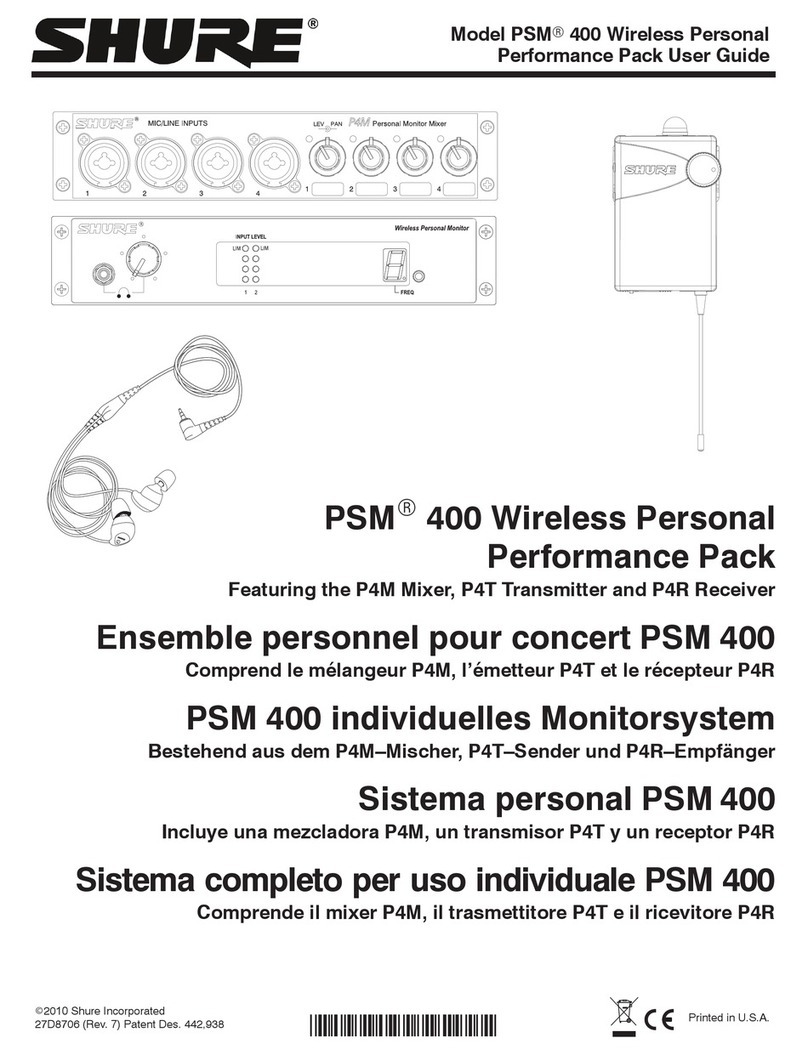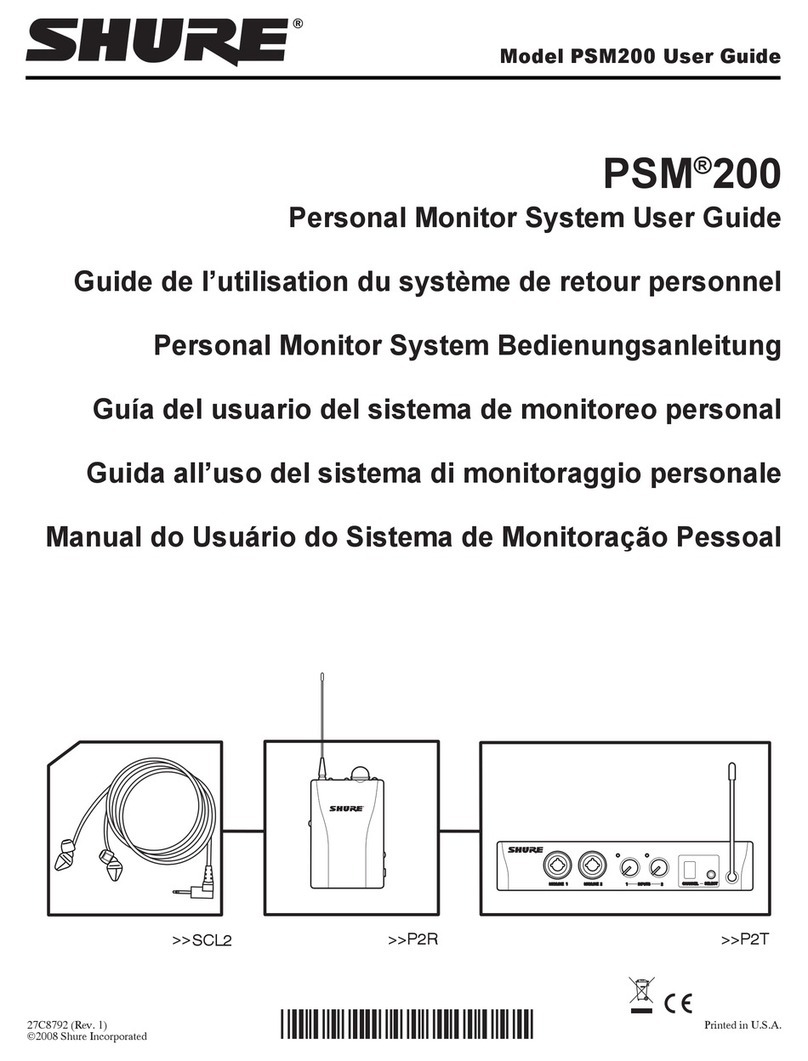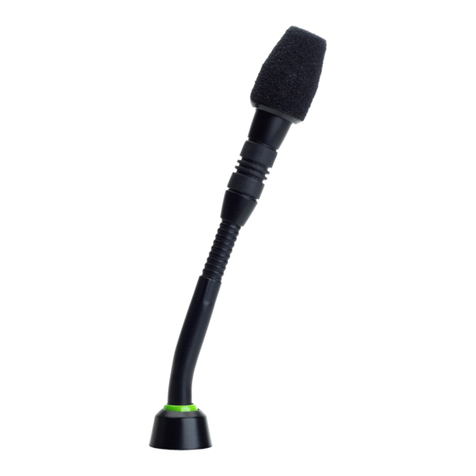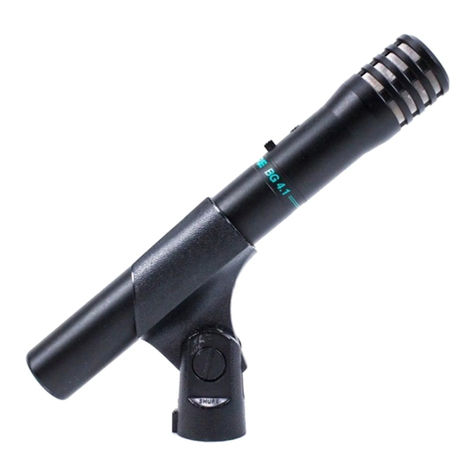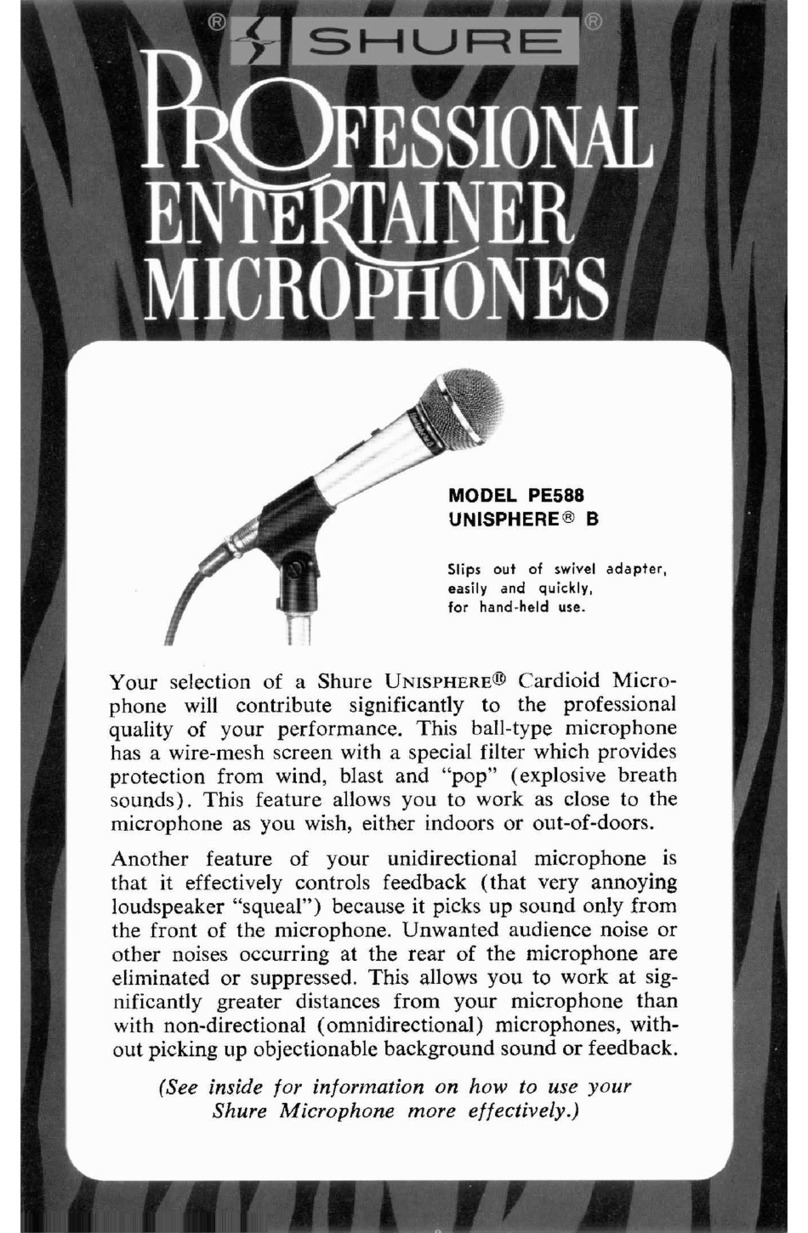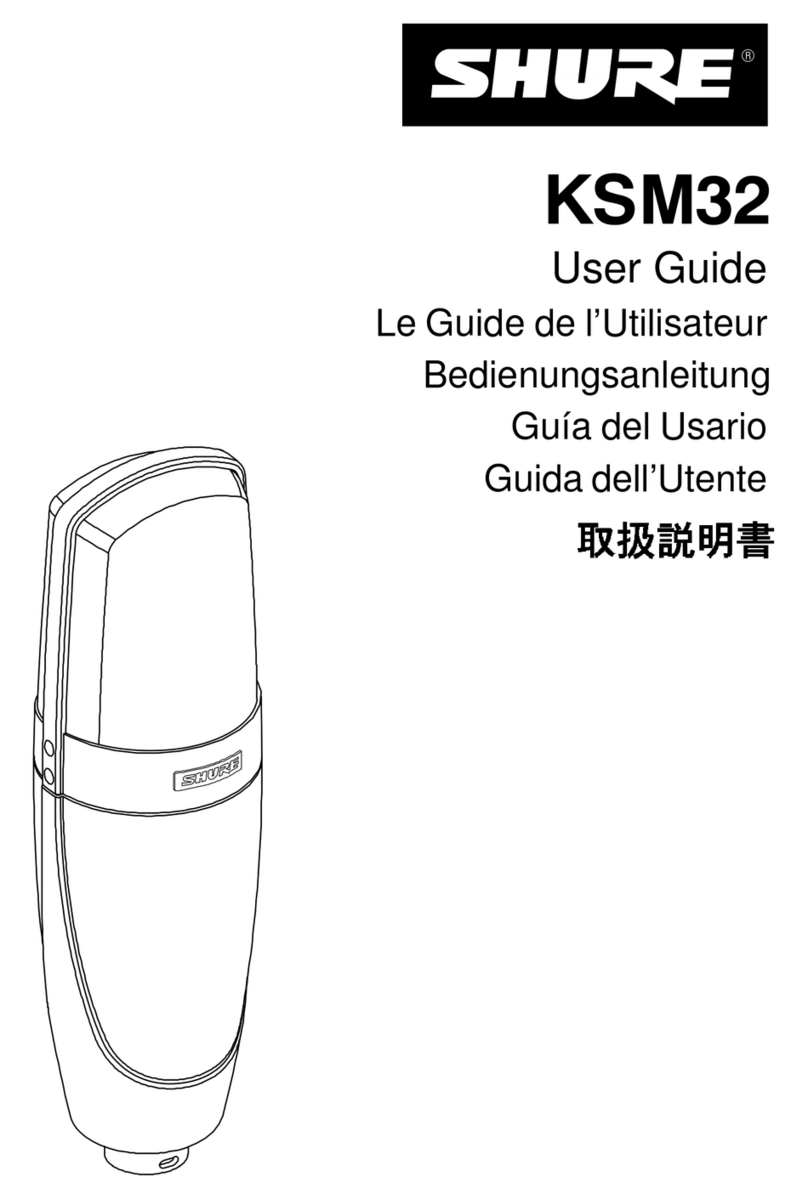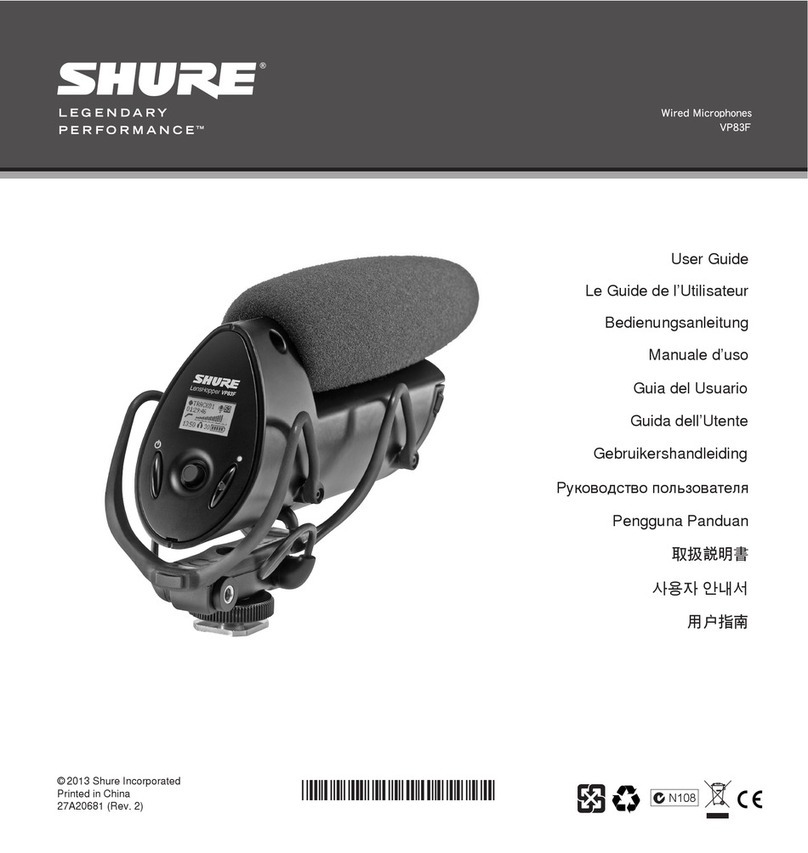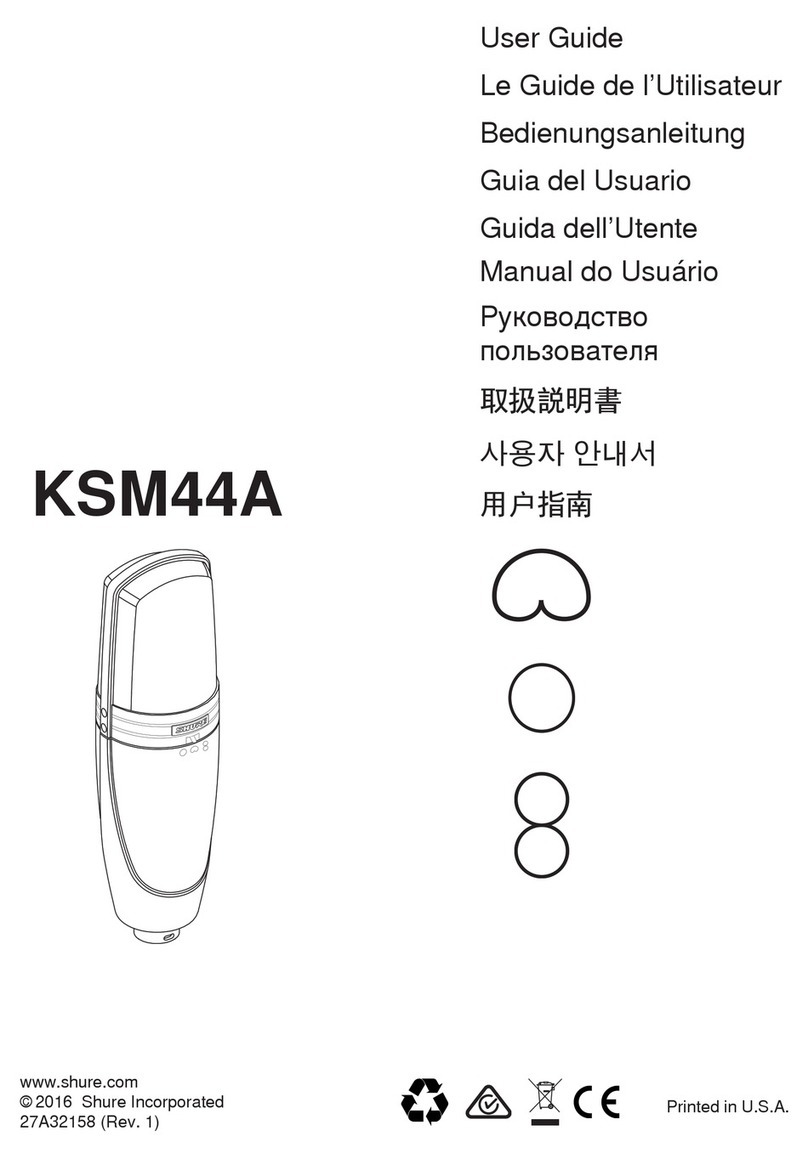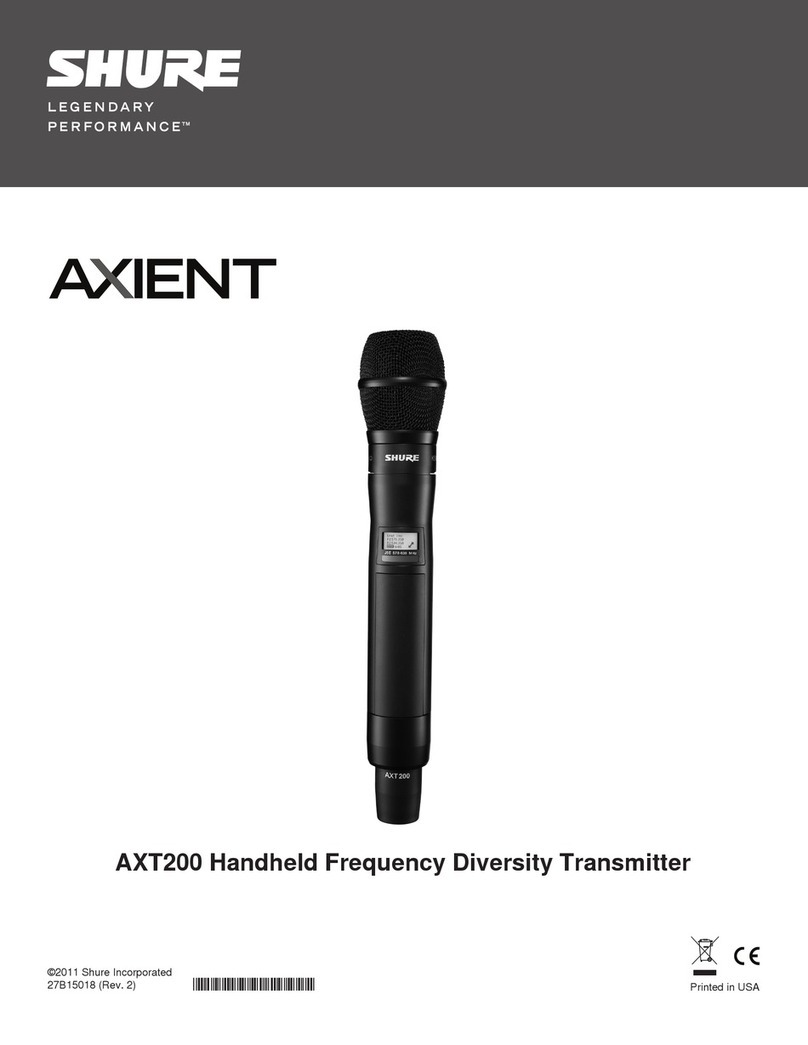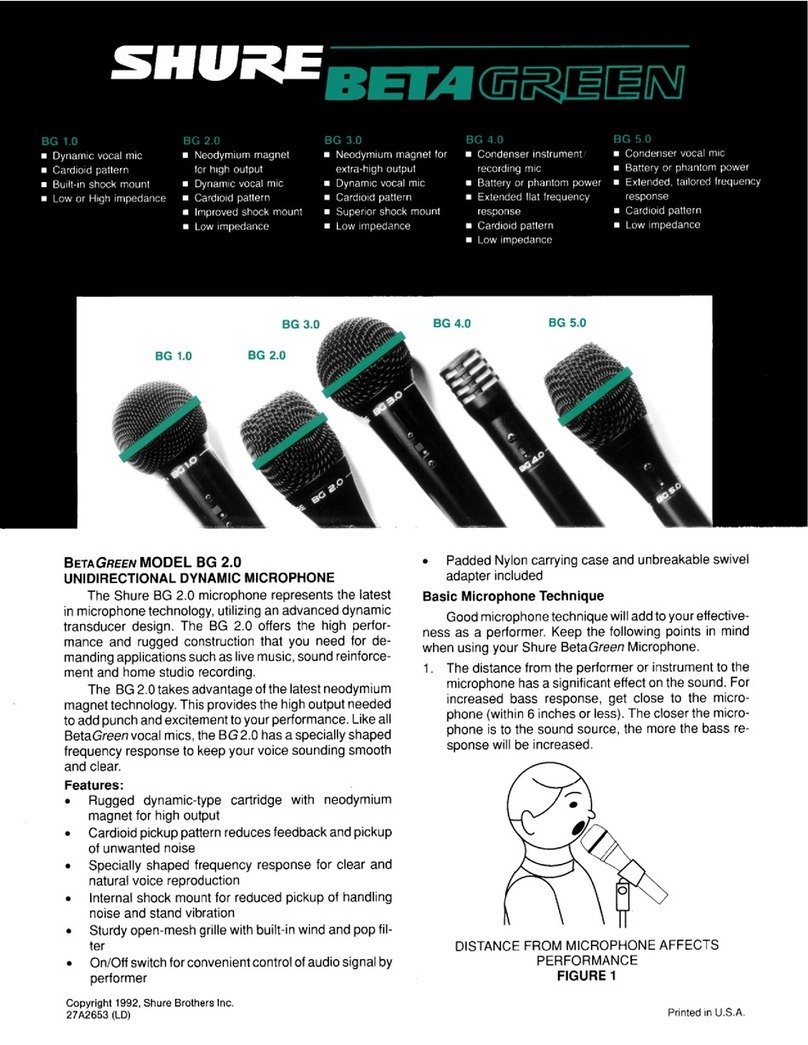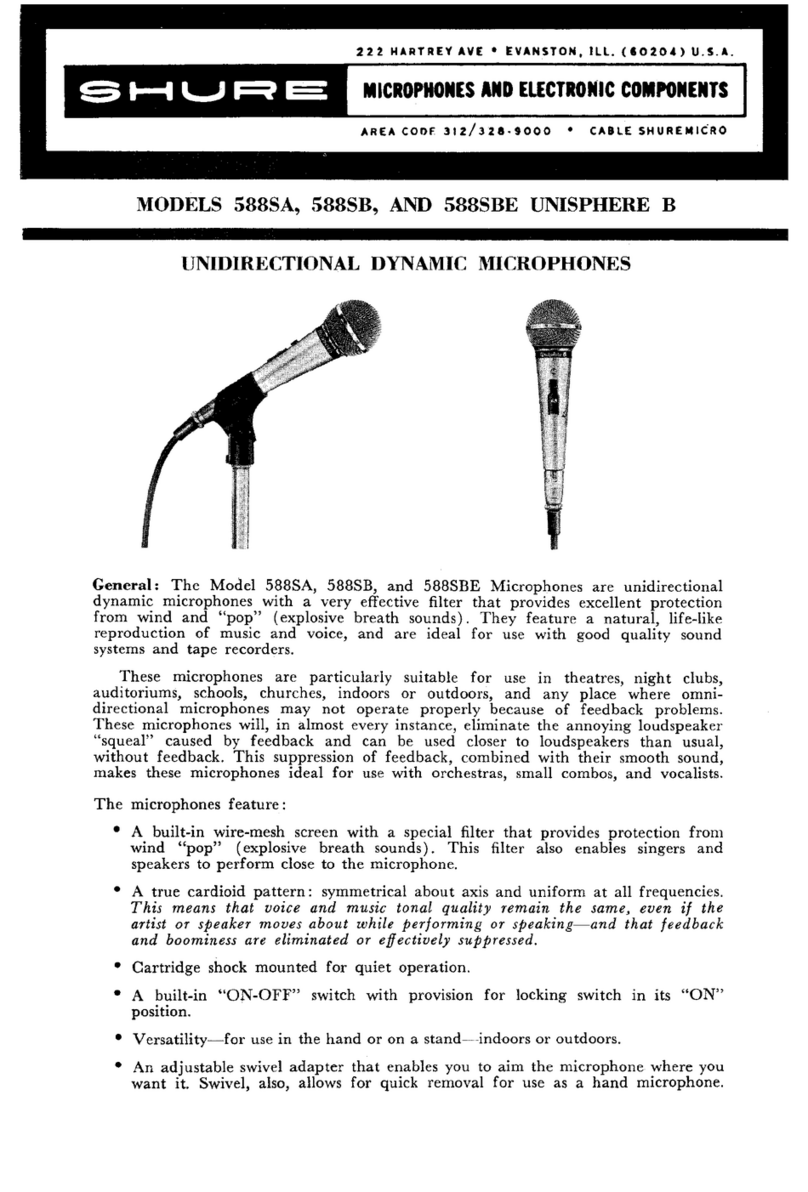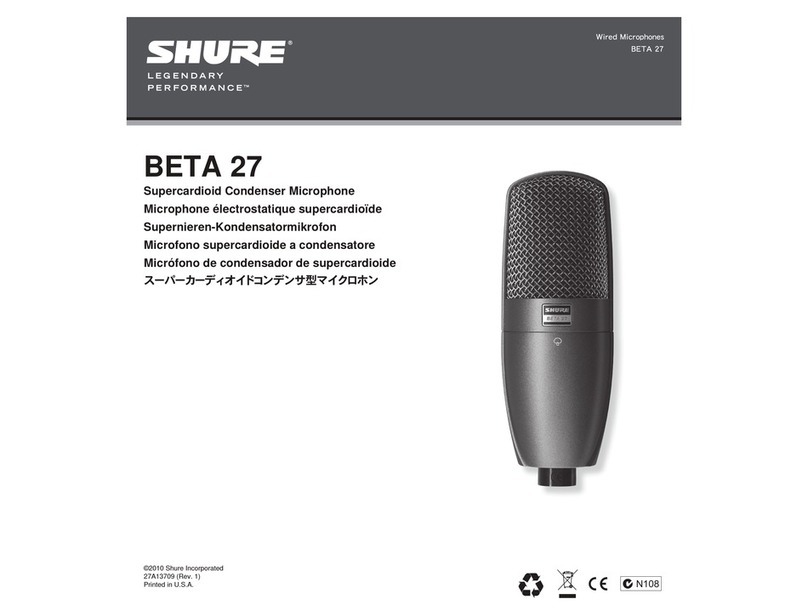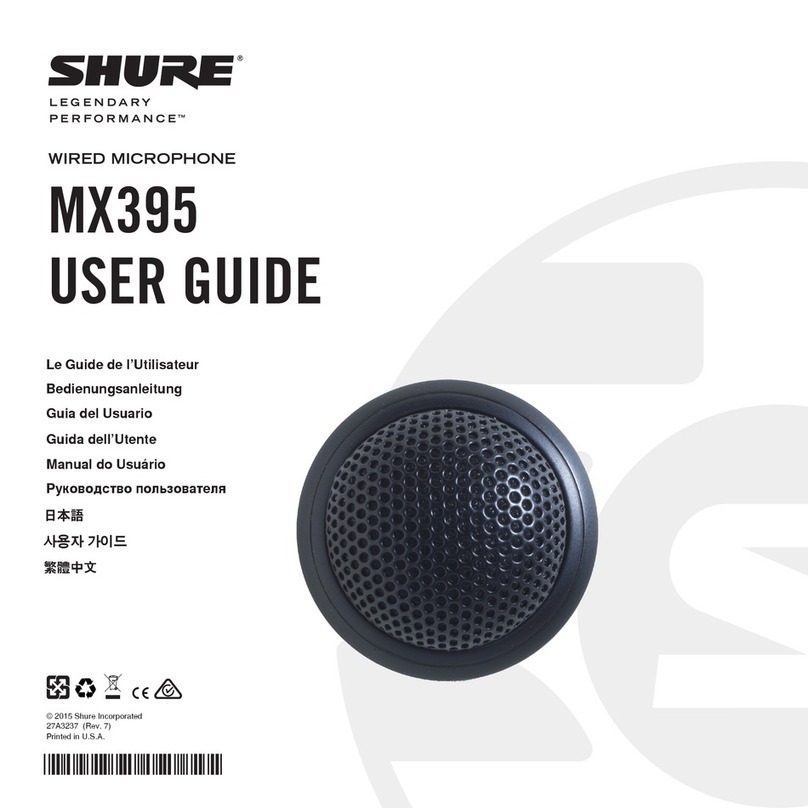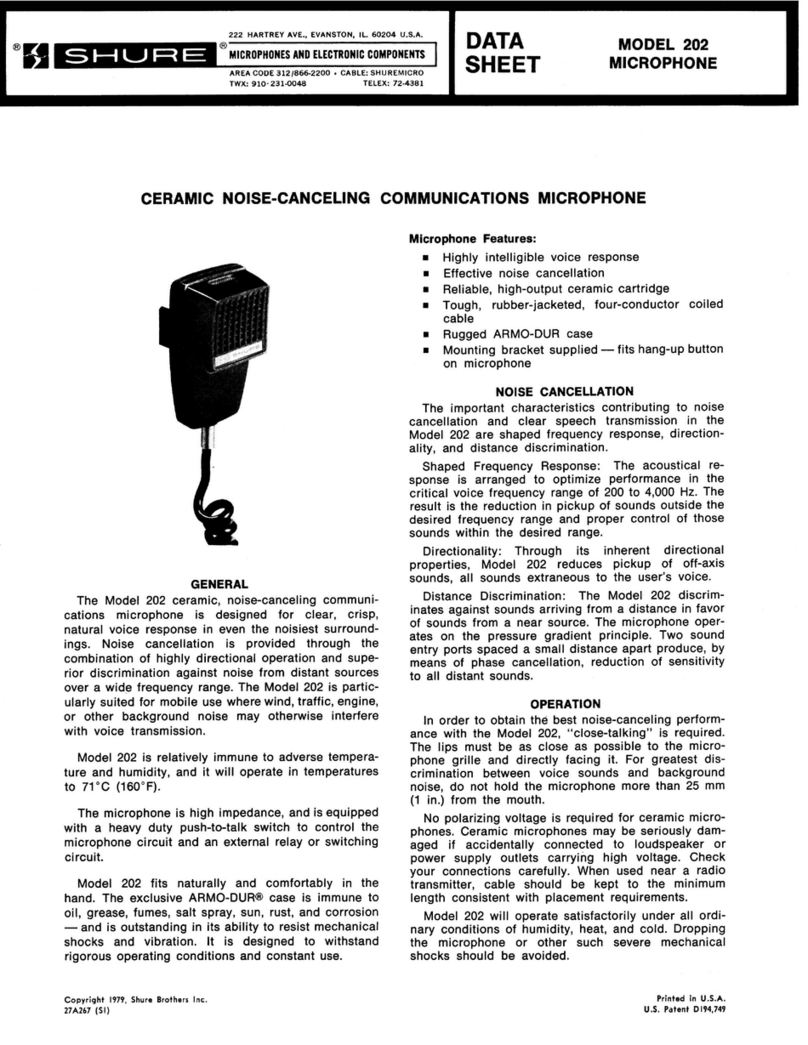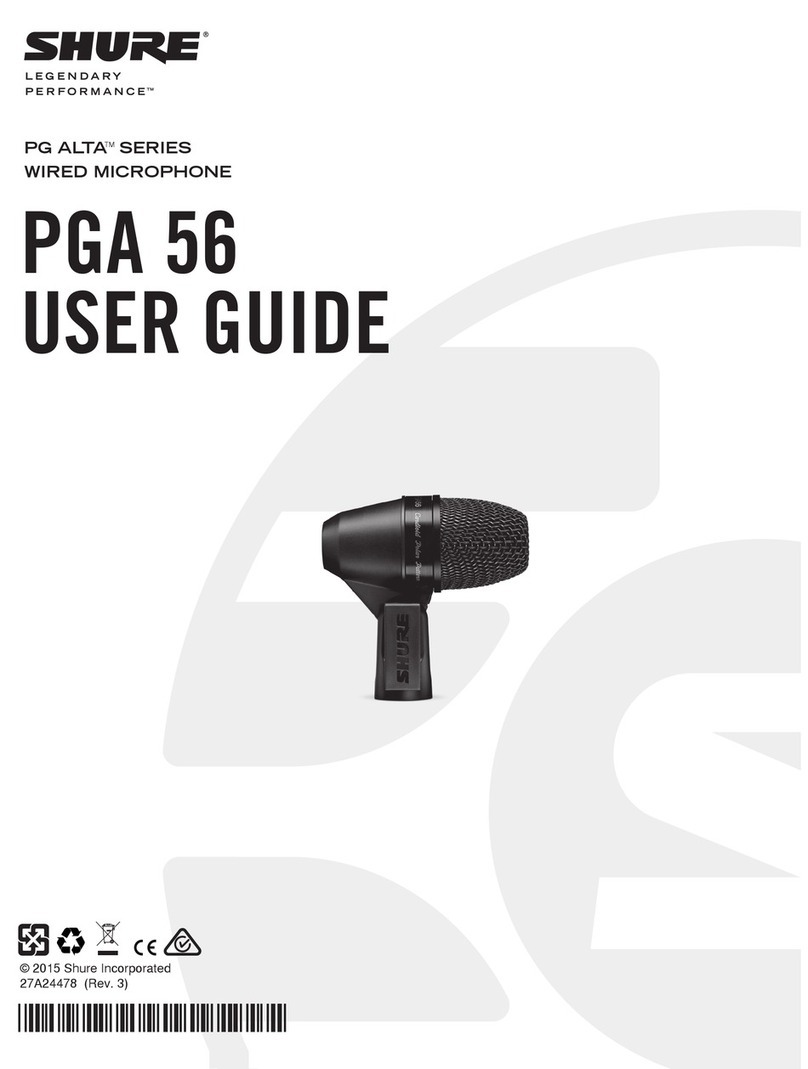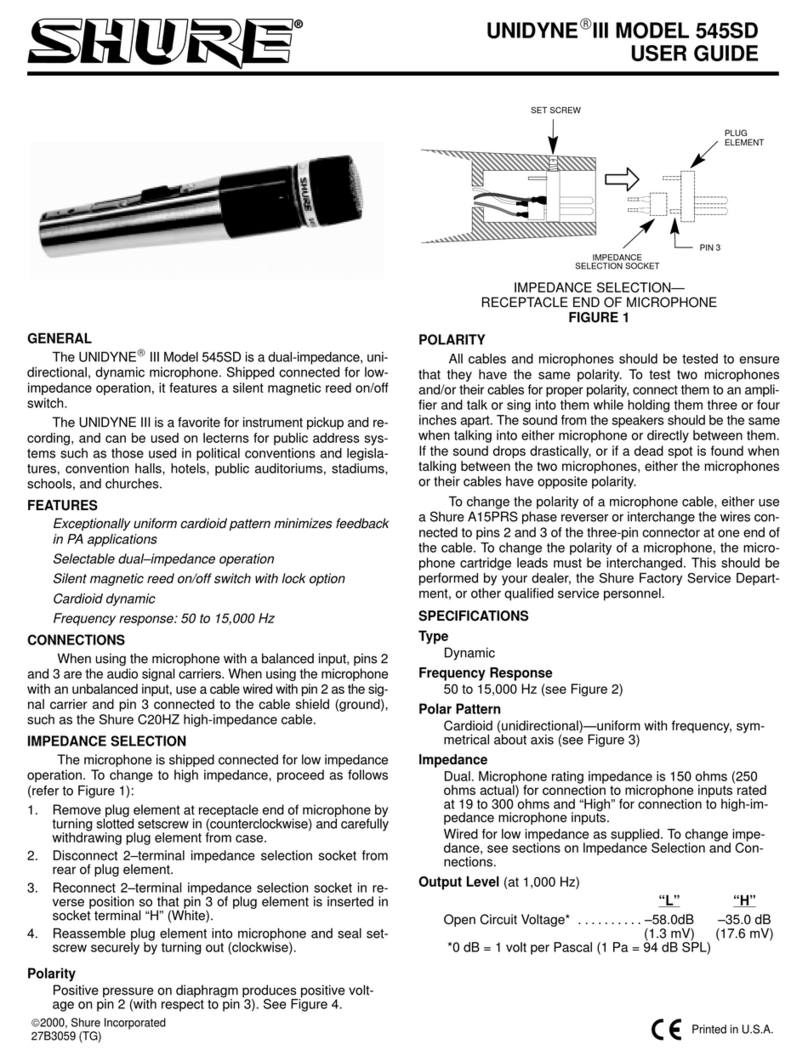
Shure Incorporated
7/87
The audio processor sends and receives audio
through a VOIP server or a standard phone line. They
also provide digital signal processing, such as
acoustic echo cancellation.
Danteen
abled
Processors that support Dante con
nect directly to the network switch to
receive audio from Microflex Advance
microphones.
Analog When using an analog processor, a
converter (such as the Shure
ANI4OUT or MXWANI) is required to
deliver the analog audio from Mi
croflex Advance microphones to the
processor.
Video Codec
Like the audio processor, the codec sends and re
ceives audio signals alongside video signals between
the near end and the far end. Audio from the near end
must connect to the audio input on the video codec,
which is typically a stereo analog connection. The
Shure ANI4OUT Audio Network Interface converts the
audio to an analog signal for connecting to a codec.
Shure ANI4IN Audio Network Interface (Analog-to-Dante Converter)
The Shure ANI4IN Audio Network Interface converts 4
channels of analog audio into independent digital au
dio channels on a Dante network. Adjustable gain and
+48V phantom power deliver the flexibility to support
line, auxiliary, and microphonelevel devices. For net
worked conferencing systems, the Audio Network In
terface provides a simple way to connect previously
installed analog equipment onto the audio network,
such as wireless microphones for presenters. The
web application gives technicians and administrators
control over channel levels and settings from any
computer connected to the same network.
Shure ANI4OUT Audio Network Interface (Dante-to-Analog Converter)


